
CS...............................................................................................................
8 - SPECIFICKÉ INFORMACE
Osobní ochranný prostředek kategorie III, 8C0.640 TARGET CANYON (obr. 1), jsou stehenní
úvazky vybavené dvěma břišními úchytnými body (C), certikované v souladu s normou EN
12277/C:07 a se standardem UIAA 105, vhodné pro horolezectví včetně výstupu.
Upozornění: Úchytné body (C) nejsou vhodné k realizaci systémů pro zastavení pádu!
Tento úvazek lze použít ve spojení s prsními úvazky, které jsou ve shodě s normou EN 12277/D.
Důležitá informace: Použití stehenního úvazku bez spojení s prsním úvazkem umožňuje udržet
v sedící poloze pouze osobu, která je při vědomí.
Obr. 2 - Terminologie součástí: (A) Pás z polyesteru, (B) Stehenní popruhy z polyesteru, (C) Břišní
úchytné body z polyesteru, (C1) a Dyneema (C2), (D) Hliníkové spony, (E) Spony z nerezavějící
oceli, (F) Upínky z nylonu, (G) Ochranná sedačka z PVC.
Upozornění: Dlouhodobější zavěšení na úvazku může být zejména v případě, že je nečinné,
příčinou syndromu (nebo úrazu) ze zavěšení, který způsobí ztrátu vědomí nebo dokonce
i smrt!
8.1 - Navlečení úvazku
Před navlečením úvazku zkontrolujte vhodnost velikosti (viz tabulka SIZE).
Správné navlečení:
- povolte pás (A) a stehenní popruhy (B),
- vložte nohy do stehenních popruhů (B) tak, že je protáhnete přes pás (A),
- napněte nastavovací pásky pásu (A) a stehenních popruhů (B) - (obr. 3),
- nastavte polohu upínek (F), abyste zachytili přebytečné části pásků.
Důležitá informace:
- před použitím úvazku proveďte v naprosto bezpečné poloze pohyby a zkoušky zavěšení na
úchytných bodech, abyste se ujistili, že je úvazek správně nastaven a že je pohodlný pro určené
použití,
- během použití pravidelně kontrolujte uzavření spon.
8.2 - Použití v horolezectví včetně výstupu
Přivažte se osmičkovým uzlem k jednomu z úchytných bodů; viz příklady správného přivázání:
- stehenním úvazkem (obr. 4),
- stehenním a prsním úvazkem (obr. 5).
Upozornění: Hrozí smrtelné nebezpečí! Je jednoznačně zakázáno přivazovat se s použitím
pouze jediné spojky! (obr. 6).
I když se to výrazně nedoporučuje, je možné přivázat se s použitím dvou karabin se
šroubovací kruhovou maticí (které jsou ve shodě s normou EN 362), které jsou umístěny proti
sobě v souladu s obrázkem 7.
Příklady správného připojení k jiným zařízením (obr. 8).
Příklady použití v horolezectví včetně výstupu (obr. 9 a 10).
8.3 - Výměna ochranné sedačky
- otevřete suchý zip, kterým je ochranná sedačka (G) zajištěna k pásu (A) - obrázek 11,
- vyvlečte stehenní popruhy (B) ze spon (E) a z ochranné sedačky (G),
- zasuňte stehenní popruhy (B) do ochranné sedačky (G) - přidržte elektricky svařenou část
ochranné sedačky směrem dovnitř úvazku (ve styku s tělem uživatele) - obrázek 12,
- zasuňte stehenní popruhy (B) do spon (E) - obrázek 13,
- zajistěte ochrannou sedačku (G) k pásu (A) prostřednictvím suchého zipu.
9 - KONTROLY PŘED POUŽITÍM A PO POUŽITÍ
Zkontrolujte a ujistěte se, že:
- textilní součásti nevykazují řezy, popálení, zbytky chemických produktů, nadměrné prachové
peří, opotřebení a zvlášť pozorně zkontrolujte oblasti styku s kovovými součástmi (spony, kroužky
apod.),
- jsou švy neporušené a nevyskytují se na nich odřezané nebo povolené nitě,
- spony fungují správně (upnutí, nastavení a upnutí), nevyskytují se na nich praskliny, stopy
koroze, mechanické deformace a že je případné opotřebení výhradně estetického charakteru.
10 - CERTIFIKACE
Toto zařízení bylo certikováno akreditovanou institucí č. 0123 - TÜV SÜD Product Service GmbH
Ridlerstrasse, 65 - D-80339 Munich - Německo.
DE...............................................................................................................
8 – SPEZIFISCHE INFORMATIONEN
Die Persönliche Schutzausrüstung (PSA) in Klasse III 8C0.640, TARGET CANYON (Abb. 1), ist
ein Hüftgurt mit zwei Bauchösen (C), zertiziert nach EN 12277/C:07 und nach dem Standard
UIAA 105, für Bergsport einschließlich Bergsteigen geeignet.
Achtung: Die Bauchösen (C) sind nicht für die Realisierung von Auffangsystemen geeignet!
Dieser Klettergurt kann zusammen mit Brustgurten nach EN 12277/D benutzt werden. Wichtig:
Die Verwendung des Hüftgurts ohne Kombination mit einem Brustgurt ermöglicht das Stützen
einer Person nur, wenn diese bei Bewusstsein ist.
Abb. 2 – Terminologie der Teile: (A) Polyestergürtel, (B) Beinschlaufen aus Polyester, (C)
Bauchöse aus Polyester (C1) und aus Dyneema (C2), (D) Stahlschnallen, (E) Edelstahlschnallen
, (F) Schlitzschnallen aus Nylon, (G) PVC-Schutzsitz.
Achtung: Längeres Hängen im Klettergurt, vor allem wenn man sich nicht bewegt,
kann zum Hängesyndrom (oder Trauma) führen, das Bewusstlosigkeit und auch Tod
verursachen kann!
8.1 – Tragbarkeit des Klettergurts
Vor dem Anziehen des Klettergurts die richtige Größe prüfen (siehe Tabelle SIZE).
Richtiges Anziehen:
- den Gürtel (A) und die Beinschlaufen (B) lockern,
- die Beine in die Beinschlaufen (B) stecken und dabei den Gürtel (A) anziehen,
- die Stellbänder des Gürtels (A) und der Beinschlaufen (B) festziehen - (Abb. 3),
- die Schlitzschnallen (F) positionieren, um überschüssiges Band zu befestigen.
Wichtig:
- Vor dem Gebrauch des Klettergurts in absolut sicherer Position Bewegungen und Tests für
das Hängen bei dem Anschlagpunkt ausführen um sicherzustellen, dass der Klettergurt richtig
eingestellt und für den vorgesehenen Gebrauch bequem ist,
- Während des Gebrauchs regelmäßig den Verschluss der Schnallen prüfen.
8.2 – Gebrauch beim Bergsport einschließlich Bergsteigen
Sich mit einem Achterknoten an einem den Anschlagpunkten befestigen. Beispiele für richtiges
Anschlagen:
mit Hüftgurt (Abb. 4),
mit Hüftgurt und Brustgurt (Abb. 5),
Achtung: Lebensgefahr! Es ist strengstens verboten, sich mit nur einem Karabiner
einzuhängen! (Abb. 6).
Auch wenn davon abgeraten wird, kann man sich mit zwei Karabinern mit Schraubverschluss
(nach EN 362) einhängen, die einander gegenüber liegen, wie zu sehen in Abb. 7.
Beispiele für richtige Verbindung mit anderen Vorrichtungen (Abb. 8).
Anwendungsbeispiele beim Bergsport einschließlich Bergsteigen (Abb. 9 und 10).
8.3 – Auswechseln des Schutzsitzes
- den Klettverschluss, der den Schutzsitz (G) an dem Gürtel (A) festhält, öffnen (Abb. 11),
- die Beinschlaufen (B) aus den Schnallen (E) und dem Schutzsitz (G) ziehen,
- die Beinschlaufen (B) in den Schutzsitz (G) einlegen – dabei den elektrogeschweißten Teil des
Schutzsitzes im Inneren des Klettergurts (im Kontakt mit dem Körper des Anwenders) halten -
Abb. 12,
- die Beinschlaufen (B) in den Schnallen (E) einlegen – Abb. 13
- den Schutzsitz (G) an dem Gürtel (A) mit dem Klettband befestigen.
9 – KONTROLLEN VOR UND NACH DEM GEBRAUCH
Kontrollieren und sicherstellen dass:
- die textilen Teile keine Schnitte, Verbrennungen, Reste von Chemikalien, zu starke Fusselbildung,
Verschleiß aufweisen und insbesondere die Bereiche in Kontakt mit Metallkomponenten prüfen
(Schnallen, Ringe usw.),
- die Nähte unversehrt sind und keine geschnittene oder lockere Fäden aufweisen,
- die Schnallen richtig funktionieren (Regulierung und Klemmung), keine Risse, Korrosionsspuren,
mechanische Verformungen aufweisen und dass ggf. vorliegender Verschleiß ausschließlich
ästhetischen Charakters ist.
10 – ZERTIFIZIERUNG
Diese V orrichtung wurde von der akkreditierten Prüfstelle Nr. 0123 - TÜV SÜD Product Service GmbH
Ridlerstrasse, 65, D-80339 München – Deutschland – zertiziert.
EN....................................................................................................................
8 - SPECIFIC INFORMATION
The category III Personal Protective Equipment, 8C0.640, TARGET CANYON (g. 1), is a sit harness,
with two ventral attachment points (C), certied in accordance with the EN 12277/C:07 norm and the
UIAA 105 standard, and suitable for mountaineering, including rock climbing.
Warning: The attachment points (C) are not suitable for creating a fall arrest system!
This harness may be used along with chest harnesses that conform to the EN 12277/D norm.
Important: Use of the sit harness without combining it with a chest harness, only makes it possible to
keep a person in the sitting position when they are conscious.
Fig. 2 - Nomenclature of parts: (A) Waist belt of polyester, (B) leg loops of polyester, (C) Ventral
attachment points of polyester (C1) and of Dyneema (C2), (D) Buckles made of aluminium, (E) Buckles
made of stainless steel, (F) Loops made of nylon, (G) Protective seat made of PVC.
Warning: Prolonged suspension on the harness, especially in motionless conditions, may
cause harness hang syndrome (or suspension trauma) that can lead to loss of consciousness
and even death!
8.1 - Harness Wearability
Before you put on the harness, check the size (see SIZE table).
How to correctly wear it:
- loosen the waist belt (A) and the leg loops (B),
- slip your legs through the waist belt (A) into the leg loops (B),
- stretch the adjusting slings of the waist belt (A) and of the leg loops (B) - (g. 3),
- Put the loops (F) in the correct position in order to hold the trailing ends of the slings.
Important:
- Before using the harness, nd a completely safe position and carry out movements and suspension
tests on the attachment points to make sure the harness is adjusted properly and comfortable for your
intended use.
- Regularly check that the buckles are closed when in use.
8.2 - Use in mountaineering including rock climbing
Connect to one of the two attachment points using a gure eight not, examples of correct connections:
- With a sit harness (g. 4).
- With a sit and a chest harness (g. 5).
Warning: Danger of death! Connecting up using one connector only is strictly forbidden! (g. 6).
Even if strongly inadvisable, it is possible to connect up using two screw locking connectors (that
conform to the EN 362 Standard) counter positioned as shown in g. 7.
Examples of correct connections with other devices (g. 8).
Examples of use for mountaineering including rock climbing (g 9 and 10).
8.3 - Changing the protective seat
- Open the Velcro that attaches the protective seat (G) to the waist belt (A) - gure 11.
- Take the leg loops (B) out of the buckles (E) and the protective seat (G).
- Insert the leg loops (B) into the protective seat (G) - keeping the arc welded part of the protective seat
towards the inside of the harness (in contact with the user’s body) - gure 12.
- Insert the leg loops (B) into the buckles (E) - gure 13.
- Attach the protective seat (G) to the waist belt (A) using the Velcro.
9 - CHECKS BEFORE AND AFTER USE
Check and make sure that:
- The textile parts do not show any signs of tears, burns, chemical residue, excessive uff, or wear. Pay
special attention to the areas that come into contact with metal parts (buckles, rings, etc.),
- The stitching is undamaged and that there are no cut or loose threads.
- The buckles work properly (locking, adjustment and locking) and show no signs of cracks, corrosion
and mechanical deformation. Wear is acceptable as long as it is only aesthetic.
10 – CERTIFICATION
This device is certied by notied body n° 0123 - TÜV SÜD Product Service GmbH Daimlerstraße 11
- 85748 Garching - Germany
ES ....................................................................................................................
8 – INFORMACIÓN ESPECÍFICA
El equipo de protección individual de la clase III 8C0.640, denominado TARGET CANYON (g. 1), es
un arnés con perneras dotado de dos puntos de enganche ventral (C), certicado según la norma EN
12277/C:07 y el estándar UIAA 105, apto para alpinismo, incluida la escalada.
Atención: ¡los puntos de enganche (C) no son aptos para realizar sistemas de parada de las
caídas!
Este arnés puede utilizarse en combinación con arneses de pecho conformes a la norma EN 12277/D.
Importante: la utilización del arnés con perneras sin combinación con un arnés de pecho permite
mantener en posición sentada sólo una persona consciente.
Fig. 2 - Terminología de las piezas: (A) Cinturón de poliéster, (B) Perneras de poliéster, (C) Puntos de
enganche ventrales de poliéster, (C1) y Dyneema (C2), (D) Hebillas de aluminio – (E) Hebillas de acero
inoxidable, (F) - Pasadores de nylon, (G) Protección posterior tipo culera en pvc.
Atención: ¡la suspensión prolongada en el arnés, sobre todo si se está inerte, puede provocar
el síndrome (o trauma) de suspensión que puede llevar a la pérdida de conocimiento e incluso
a la muerte!
8.1 - Vestibilidad del arnés
Antes de ponerse el arnés comprobar la idoneidad de la talla (véase la tabla SIZE).
Correcta vestibilidad:
- aojar el cinturón (A) y las perneras (B),
- introducir las piernas en las perneras (B) pasando a través del cinturón (A),
- tensar los cordones de ajuste del cinturón (A) y de las perneras (B) - (g. 3),
- colocar los pasadores (F) para retener las excedencias de cordón.
Importante:
- antes de utilizar el arnés, en posición de completa seguridad, efectuar movimientos y pruebas de
suspensión en los puntos de enganche para comprobar que el arnés esté correctamente ajustado y
resulte cómodo para la utilización prevista,
- durante la utilización, controlar con frecuencia el cierre de las hebillas.
8.2 - Utilización en alpinismo incluida la escalada
Atarse a uno de los puntos de enganche con un nudo de ocho, ejemplos de atadura correcta:
- con arnés con perneras (g. 4),
- con arnés con perneras y de pecho (g. 5).
Atención: ¡peligro de muerte! ¡Está totalmente prohibido atarse utilizando un único conector!
(g. 6).
Aunque se desaconseja vivamente, es posible atarse utilizando dos conectores con seguro de rosca
(conformes a la norma EN 362) colocados contrapuestos como se indica en la gura 7.
Ejemplos de enganche correcto con otros dispositivos (g. 8).
Ejemplos de utilización en alpinismo incluida la escalada (g. 9 y 10).
8.3 - Sustitución de la protección posterior
- abrir el velcro que bloquea la protección posterior (G) al cinturón (A) - gura 11,
- extraer las perneras (B) de las hebillas (E) y de la protección posterior (G),
- introducir las perneras (B) en la protección posterior (G) - mantenendo la parte electrosoldada de
la protección posterior hacia el interior del arnés (en contacto con el cuerpo del usuario) - gura 12,
- introducir las perneras (B) en las hebillas (E) - gura 13,
- bloquear la protección posterior (G) al cinturón (A) mediante el velcro.
9 - CONTROLES ANTES Y DESPUÉS DEL USO
Controle y asegúrese de que:
- las partes textiles no presenten cortes, quemaduras, residuos de productos químicos, excesiva
pelusa, desgaste y, en particular, compruebe el estado de las zonas en contacto con componentes
metálicos (hebillas, anillos, etc.),
- las costuras estén íntegras y que no haya hilos cortados o aojados,
- las hebillas funcionen correctamente (bloqueo, ajuste y bloqueo), que no tengan suras, rastros
de corrosión, deformaciones mecánicas y que el eventual desgaste sea exclusivamente de carácter
estético.
10 – CERTIFICACIÓN
Este equipo ha sido certicado por el organismo acreditado n.° 0123 - TÜV SÜD Product Service
GmbH Ridlerstrasse, 65, D-80339 Múnich - Alemania.
FR ....................................................................................................................
8 – INFORMATIONS PARTICULIÈRES
L’Équipement de Protection Individuelle de classe III 8C0.640, dénommé TARGET CANYON (g. 1),
est un harnais cuissard pourvu de deux points d’attache ventral (C), certié selon la norme européenne
EN 12277/C:07 et le standard UIAA 105, convenant à l’alpinisme, escalade comprise.
Attention: les points d’attache (C) ne conviennent pas aux actions des systèmes d’arrêt des
chutes !
Ce harnais peut être employé en combinaison avec les harnais torse, conformes à la norme EN
12277/D. Important : l’emploi du harnais cuissard sans la combinaison avec un harnais torse consent
de soutenir une personne assise, seulement lorsqu’elle est consciente.
Fig. 2 - Nomenclature des pièces : (A) Ceinture polyester, (B) Tours de cuisse polyester, (C) Point
d’attache ventral polyester (C1) et Dyneema (C2), (D) Boucles en aluminium, (E) Boucles en acier
inoxydable, (F) Passants en nylon, (G) Culotte en PVC.
Attention: la suspension prolongée dans le harnais, surtout lorsque le corps est inerte, peut
provoquer le syndrome (ou trauma) de suspension qui cause une perte de conscience et même
la mort !
8.1 - Simplicité de port du harnais
Avant de mettre le harnais, vérier que la taille soit idoine (voir le tableau SIZE).
Simplicité de port :
- desserrer la ceinture (A) et les tours de cuisse (B),
- enler les jambes dans les tours de cuisse (B) en passant à travers la ceinture (A),
- mettre en tension les sangles de réglage de la ceinture (A) et des tours de cuisse (B) – (g. 3),
- placer les passants (F) pour retenir les parties de sangle restantes.
Important :
- avant d’utiliser le harnais, en position de sécurité absolue, exécuter des mouvements et des essais
de suspension sur chaque point d’attache pour s’assurer que le harnais soit réglé correctement et qu’il
soit confortable pour l’emploi prévu,
- pendant l’emploi, vérier régulièrement la fermeture des boucles.
8.2 – Emploi en alpinisme, escalade comprise
Se lier à un des deux points d’attache avec un nœud en huit ; exemples de liage correct :
- avec harnais cuissard (g. 4),
- avec harnais cuissard et torse (g. 5).
Attention : danger de mort ! Il est absolument interdit de se lier en utilisant un seul mousqueton !
(g. 6).
Même si fortement déconseillé, il est possible de se lier en utilisant deux mousquetons à virole à vis
(conformes à la norme EN 362) placés opposés l’un à l’autre, comme illustré dans la gure 7.
Exemples de jonction correcte avec d’autres dispositifs (g. 8).
Exemples d’emploi en alpinisme, escalade comprise (g. 9 et 10).
8.3 – Remplacement de la culotte
- ouvrir la bande velcro qui bloque la culotte (G) à la ceinture (A) - gure 11,
- sortir les tours de cuisse (2) des boucles (5) et de la culotte (7),
- introduire les tours de cuisse (B) dans la culotte (G), en maintenant la partie électrosoudée de la
culotte vers l’intérieur du harnais (en contact avec le corps de l’utilisateur) - gure 12,
- introduire les tours de cuisse (B) dans les boucles (E) - gure 13
- bloquer la culotte (G) à la ceinture (A) à l’aide de la bande velcro.
9 - CONTRÔLES AVANT ET APRÈS L’EMPLOI
Contrôlez et assurez-vous que :
- les parties textiles n’aient aucun signe de coupure, brûlure, résidus de produits chimiques, un duvet
excessif, de l’usure, vériez particulièrement les zones en contact avec les composants en métal
(boucles, anneaux, etc.),
- les coutures soient intactes et qu’il n’y ait pas de ls coupés ou lâches,
- les boucles fonctionnent correctement (blocage, réglage et blocage), qu’elles ne présentent aucun
signe de ssures, traces de corrosion, déformations mécaniques et que l’usure éventuelle soit
exclusivement à caractère esthétique.
10 - CERTIFICATION
Cet équipement a été certié par l’organisme agréé n°0123 - TÜV SÜD Product Service GmbH
Ridlerstrasse, 65, D-80339 Munich, Allemagne.
IT .....................................................................................................................
8 - INFORMAZIONI SPECIFICHE
Il Dispositivo di Protezione Individuale di III categoria 8C0.640 TARGET CANYON (g. 1), è una
imbracatura cosciale provvista di due punti di attacco ventrali (C), certicata in accordo alla norma EN
12277/C:07 e allo standard UIAA 105, adatta per l’alpinismo inclusa l’arrampicata.
Attenzione: i punti di attacco (C) non sono adatti per realizzare sistemi di arresto delle cadute!
Questa imbracatura può essere utilizzata in abbinamento ad imbracature pettorali conformi alla norma
EN 12277/D. Importante: l’utilizzo dell’imbracatura cosciale senza l’abbinamento ad una pettorale
consente di sostenere in posizione seduta una persona solo allo stato conscio.
Fig. 2 - Terminologia delle parti: (A) Cintura in poliestere, (B) Cosciali in poliestere, (C) Punti di attacco
ventrali in poliestere (C1) e Dyneema (C2), (D) Fibbie in alluminio, (E) Fibbie in acciaio inossidabile, (F)
Passanti in nylon, (G) Culotte in pvc.
Attenzione: la sospensione prolungata sull’imbracatura, soprattutto se inerte, può indurre la
sindrome (o trauma) da sospensione che provoca perdita di coscienza e anche morte!
8.1 - Vestibilità dell’imbracatura
Prima di indossare l’imbracatura vericare l’idoneità della taglia (vedere tabella SIZE).
Corretta vestibilità:
- allentare la cintura (A) e i cosciali (B),
- inlare le gambe nei cosciali (B) passando attraverso la cintura (A),
- tensionare le fettucce di regolazione della cintura (A) e dei cosciali (B) - (g. 3),
- posizionare i passanti (F) per trattenere le eccedenze delle fettucce.
Importante:
- prima di utilizzare l’imbracatura, in posizione di assoluta sicurezza, effettuare movimenti e prove di
sospensione sui punti di attacco per accertarsi che l’imbracatura sia correttamente regolata e comoda
per l’utilizzo previsto,
- durante l’utilizzo controllare regolarmente la chiusura delle bbie.
8.2 - Utilizzo in alpinismo inclusa l’arrampicata
Legarsi ad uno dei due punti di attacco con nodo a otto, esempi di corretta legatura:
- con imbracatura cosciale (g. 4),
- con imbracatura cosciale e pettorale (g. 5).
Attenzione: pericolo di morte! è assolutamente vietato legarsi utilizzando un solo connettore!
(g. 6).
Anche se altamente sconsigliato, è possibile legarsi utilizzando due connettori con ghiera a vite
(conformi alla norma EN 362) posizionati contrapposti come in gura 7.
Esempi di corretto collegamento con altri dispositivi (g. 8).
Esempi di utilizzo in alpinismo inclusa l’arrampicata (g. 9 e 10).
8.3 - Sostituzione della culotte
- Aprire il velcro che blocca la culotte (G) alla cintura (A) - gura 11,
- slare i cosciali (B) dalle bbie (E) e dalla culotte (G),
- inserire i cosciali (B) nella culotte (G) - mantenendo la parte elettrosaldata della culotte verso l’interno
dell’imbracatura (a contatto con il corpo dell’utilizzatore) - gura 12,
- inserire i cosciali (B) nelle bbie (E) - gura 13,
- bloccare la culotte (G) alla cintura (A) mediante il velcro.
9 - CONTROLLI PRE E POST USO
Controllate e assicuratevi che:
- le parti tessili non presentino tagli, bruciature, residui di prodotti chimici, eccessiva peluria,
usura, in particolare vericate le zone in contatto con componenti metallici (bbie, anelli, ecc.),
- le cuciture siano integre e che non vi siano li tagliati o allentati,
- le bbie funzionino correttamente (bloccaggio, regolazione e bloccaggio), che non abbiano
cricche, tracce di corrosione, deformazioni meccaniche e che l’eventuale usura sia esclusivamente
di carattere estetico.
10 - CERTIFICAZIONE
Questo dispositivo è stato certicato dall’organismo accreditato no. 0123 - TÜV SÜD Product
Service GmbH Daimlerstraße 11 - 85748 Garching
NL ...............................................................................................................
8 - SPECIFIEKE INFORMATIE
Het persoonlijke beschermingsmiddel van IIIe categorie 8C0.640, TARGET CANYON genoemd
(afb. 1) is een dijbeentuig voorzien van een bevestigingspunt op de buik (C), gecerticeerd in
overeenstemming met de norm EN 12277/C:07 en de standaard UIAA 105, geschikt voor
alpinisme met inbegrip van rotsbeklimming.
Let op: de bevestigingspunten (C) zijn niet geschikt voor het tot stand brengen van
valpreventiesystemen!
Dit tuig kan gebruikt worden in combinatie met borsttuigen die in overeenstemming zijn met de
norm EN 12277/D. Belangrijk: indien het dijbeentuig niet samen met een borsttuig wordt gebruikt,
kan een persoon enkel ondersteund worden indien deze zich niet in de onbewuste staat bevindt.
Afb. 2 - Terminologie van de onderdelen: (A) Ceintuur van polyester, (B) Dijbeenriemen van
polyester, (C) Bevestigingspunt op de buik van polyester (C1) en Dyneema (C2), (D) Gespen
van aluminium, (E) Gespen van roestvrij staal, (F) Doorgangselementen van nylon, (G) Culotte
van pvc.
Let op: het langdurig opgehangen zijn in het tuig, met name indien dit inert is, kan leiden
tot het syndroom (of trauma) dat bewustzijnsverlies en ook de dood veroorzaakt!
8.1 - Aantrekken van het tuig
Alvorens het tuig aan te trekken, dient gecontroleerd te worden of de maat juist is (zie de tabel
SIZE).
Correct aantrekken:
- los de ceintuur (A) en de dijbeenriemen (B),
- steek uw benen in de dijbeenriemen (B) door de ceintuur (A) heen,
- span de instellingslinten van de ceintuur (A) en van de dijbeenriemen (B) aan - (afb. 3),
- positioneer de doorgangselementen (F) zodanig dat ze het overtollige lint bevatten.
Belangrijk:
- alvorens het tuig te gebruiken, dient men in een absoluut veilige positie bewegingen en hangtests
op ieder bevestigingspunt uit te voeren om er zeker van te zijn dat het tuig correct en comfortabel
voor ieder beoogd gebruik ingesteld is,
- controleer tijdens het gebruik regelmatig de sluiting van de gespen.
8.2 - Gebruik voor alpinisme met inbegrip van rotsbeklimming
Maak uzelf vast op het bevestigingspunt met een achtknoop. Voorbeeld van correct vastmaken:
- met dijbeentuig (afb. 4),
- met dijbeen- en borsttuig (afb. 5).
Let op: levensgevaar! Het is absoluut verboden om zich met slechts één connector te
verbinden! (afb. 6).
Ofschoon ten zeerste afgeraden, is het mogelijk om zich te verbinden met behulp van twee
connectoren met schroefmoer (die in overeenstemming zijn met de norm EN 362) die tegenover
elkaar geplaatst zijn, zoals afbeelding 7 toont.
Voorbeelden van een correcte verbinding op andere voorzieningen (afb. 8).
Voorbeelden van gebruik voor alpinisme met inbegrip van rotsbeklimming (afb. 9 en 10).
8.3 - Vervanging van de culotte
- maak de velcro open die de culotte (G) aan de ceintuur (A) blokkeert - afbeelding 11
- verwijder de dijbeenriemen (B) van de gespen (E) en van de culotte (G),
- plaats de dijbeenriemen (B) in de culotte (G) - houd het gelaste deel van de culotte naar de
binnenkant van het tuig gericht (in aanraking met het lichaam van de gebruiker) - afbeelding 12,
- plaats de dijbeenriemen (B) in de gespen (E) - afbeelding 13,
- blokkeer de culotte (G) met behulp van de velcro aan de ceintuur (A).
9 - CONTROLES VÓÓR EN NA HET GEBRUIK
Controleer het volgende:
- of de textieldelen geen tekens van sneden, verbranding, chemische productresten, overmatige
uitrafeling, slijtage vertonen, en controleer vooral de zones die in contact komen met metalen
componenten (gespen, ringen, enz.),
- of de naden intact zijn en of geen afgesneden of losgeraakte draden aanwezig zijn,
- of de gespen correct functioneren (blokkering, instelling en deblokkering), of ze geen barsten,
corrosietekens, mechanische vervormingen vertonen, en de eventuele slijtage uitsluitend
ethetisch is.
10 - CERTIFICATIE
Dit systeem werd gecerticeerd door de geaccrediteerde instelling nr. 0123 - TÜV SÜD Product
Service GmbH Daimlerstraße 11 - 85748 Garching - Duitsland
PT ...............................................................................................................
8 - INFORMAÇÕES ESPECÍFICAS
O dispositivo de proteção individual de classe III 8C0.640 TARGET CANYON (g. 1), é um arnês
de perna com dois pontos de xação na barriga (C), certicado de acordo com a norma EN
12277/C:07 e a norma UIAA 105, adequado para alpinismo, incluindo escalada.
Atenção: os pontos de xação (C) não são adequados para realizar sistemas de paragem
de quedas!
Este arnês pode ser utilizado em combinação com arneses peitorais, de acordo com a norma EN
12277/D. Importante: o uso do arnês de perna sem arnês peitoral permite suportar na posição
sentada uma pessoa apenas no estado consciente.
Fig. 2 - Terminologia das peças: (A) Cinturão em poliéster, (B) apoios de pernas em poliéster,
(C) pontos de xação na barriga em poliéster (C1) e Dyneema (C2), (D) velas em alumínio, (E)
velas em aço inoxidável, (F) passadores em nylon, (G) culote em pvc.
Atenção: a suspensão prolongada sobre o arnês, principalmente se inerte, pode induzir a
síndrome da suspensão, que causa perda de sentido e até mesmo a morte!
8.1 – Como colocar o arnês
Antes de colocar o arnês, verique o tamanho (consulte a tabela SIZE).
Para colocar corretamente o arnês:
- afrouxe o cinturão (A) e os apoios para pernas (B),
- passe as pernas no apoio para pernas (B) passando através do cinturão (A),
- ajuste as velas de regulação do cinturão (A) e dos apoios para pernas (B) - (g. 3),
- ajuste os passadores (F) para bloquear os resíduos de ta.
Importante:
- antes de utilizar o arnês, em posição de total segurança, efetue movimentos e testes de
suspensão dos pontos de xação para certicar-se de que o arnês esteja ajustado correta e
comodamente para o uso previsto;
KONG S.p.A. - Via XXV Aprile,4
23804 Monte Marenzo (LC) - ITALY
Tel. 0341.630506 - Fax 0341.641550
[email protected] - www.kong.it
TARGET CANYON
ZZV05473 rev. 0
8C0.640

- durante a utilização, verique regularmente o engate das velas de ajuste.
8.2 - Utilização em alpinismo, incluindo escalada
Ligue-se a um dos dois pontos de xação através de um nó em oito. Exemplo de xação correta:
- com arnês de perna (g. 4),
- com arnês de perna e peitoral (g. 5).
Atenção: perigo de morte! É absolutamente proibido ligar-se utilizando somente um
mosquetão! (g. 6).
Mesmo não sendo recomendado, é possível ligar-se utilizando dois mosquetões com fecho de
rosca (em conformidade com a norma EN 362) posicionados come na gura 7.
Exemplos de ligação correta com outros dispositivos (g. 8).
Exemplos de utilização em alpinismo, incluindo escalada (g. 9 e 10).
8.3 - Substituição da culote
- abra o velcro que bloqueia a culote (G) ao cinturão (A) - gura 11.
- retire os apoios de pernas (B) das velas (E) e da culote (G),
- introduza os apoios de pernas (B) na culote (G) - mantendo a parte eletrosoldada da culote
virada para o interior do arnês (em contacto com o corpo do utilizador) - gura 12,
- introduza os apoios de pernas (B) nas velas (E) - gura 13,
- bloqueie a culote (G) no cinturão (A) através de velcro.
9 - CONTROLOS PRÉ E PÓS USO
Verique e certique-se de que:
- as partes têxteis não apresentam rasgos, queimaduras, resíduo de produtos químicos, pelos
em excesso, desgaste, e verique especialmente as áreas em contacto com partes metálicas
(velas, anéis, etc.),
- as costuras estão integras e que não apresentam os cortados ou frouxos,
- as velas funcionam corretamente (regulação e bloqueio), não apresentam rachaduras, sinais
de corrosão, deformações mecânicas e se o eventual desgaste é de caráter estético.
10 – CERTIFICAÇÃO
Este dispositivo foi certicado pelo organismo acreditado n.º 0123 - TÜV SÜD Product Service
GmbH Daimlerstraße 11 - 85748 Garching - Alemanha
RU ..............................................................................................................
8 - ОСОБАЯ ИНФОРМАЦИЯ
Средство индивидуальной защиты категории III 8C0.640 TARGET CANYON (рис.
1), представляет собой нижнюю обвязку с двумя точками крепления на животе (C),
сертифицированную в соответствии со стандартом EN 12277/C:07 и стандартом UIAA 105,
пригодную для альпинизма, включая скалолазание.
Внимание: точки крепления (C) не предназначены для подсоединения к страховочным
системам!
Эта обвязка может использоваться вместе с грудной обвязкой, соответствующей стандарту
EN 12277/D. Важно: использование нижней обвязки без грудной позволяет поддерживать в
сидячем положении только одно лицо, находящееся в сознании.
Рис. 2 – Обозначения: (A) Ремень из полиэстера, (B) Ножные петли из полиэстера, (C)
Точки крепления на животе из полиэстера (C1) и дайнима (C2), (D) Пряжки из алюминия, (E)
Пряжки из нержавеющей стали, (F) Петельки из нейлона, (G) Сидушка из ПВХ.
Внимание: длительное нахождение в подвешенном состоянии на обвязке, особенно
без движения, может вызвать синдром подвешивания, приводящий к потере
сознания и даже смерти!
8.1 – Одевание обвязки
Перед одеванием обвязки проверить соответствие размера (см. таблицу SIZE).
Порядок одевания:
- ослабить ремень (A) и ножные петли (B),
- продеть ноги в ножные петли (B) через ремень (A),
- натянуть тесемки регулирования ремня (A) и ножных петель (B) - (рис. 3),
- отрегулировать петельки (F) для удерживания лишней длины тесемок.
Важно:
- перед использованием обвязки выполнить, в положении полной безопасности, различные
движения и пробные подвешивания на точках крепления для проверки правильности
регулирования обвязки и удобства для предусмотренного применения,
- при применении регулярно проверять, что пряжки закрыты.
8.2 – Применение для альпинизма, включая скалолазание
Выполнять крепление к одной из двух точек крепления узлом восьмеркой. Примеры
правильного соединения:
- с нижней обвязкой (рис. 4),
- с нижней и грудной обвязкой (рис. 5).
Внимание: смертельная опасность! Категорически воспрещается выполнять
крепление только одним карабином! (рис. 6).
Даже если настоятельно не рекомендуется, можно выполнять крепление при помощи
двух карабинов с винтовой муфтой (соответствующих стандарту EN 362), расположенных
напротив друг друга, как показано на рисунке 7.
Примеры правильного соединения с другими устройствами (рис. 8).
Примеры использования для альпинизма, включая скалолазание (рис. 9 и 10).
8.3 - Замена сидушки
- Открыть липучку, блокирующую сидушку (G) на ремне (A) - рисунок 11,
- вынуть ножные петли (B) из пряжек (E) и из сидушки (G),
- продеть ножные петли (B) в сидушку (G) так, чтобы электросварная часть сидушки была
обращена внутрь обвязки (в контакте с телом пользователя) - рисунок 12,
- продеть ножные петли (B) в пряжки (E) - рисунок 13,
- закрепить сидушку (G) на ремне (A) липучкой.
9 - ПРОВЕРКИ ДО И ПОСЛЕ ИСПОЛЬЗОВАНИЯ
Проверьте и убедитесь, что:
- части из текстиля не имеют порезов, прожогов, следов химикатов, повышенной
ворсистости, износа. Особо проверять зоны контакта с металлическими компонентами
(пряжками, кольцами и пр.),
- строчки целы, не имеют порезанных или ослабших нитей,
- пряжки функционируют правильно (блокировка, регулирование и блокировка), не имеют
трещин, следов коррозии, механической деформации и что возможный износ носит чисто
эстетический характер.
10 – СЕРТИФИКАЦИЯ
Это устройств обыло сертифицировано аккредитованной организацией № 0123 - TÜV SÜD
Product Service GmbH Ridlerstrasse, 65, D-80339 Munich - Германия.
ZH ...............................................................................................................
8 -
III8C0.640 TARGET CANYON1C
EN 12277/C:07UIAA 105
(C)
EN12277/D
2 - (A) (B) (C) (C1)(C2)
(D) (E) (F) (G) PVC
8.1 -
- AB
- AB
- AB-3
- F
-
-
8.2 -
8
- 4
- 5
6
EN3627
8
910
8.3 -
- GA- 11
- EGB
- BG- - 12
- BE- 13
- GA
9 -
-
-
-
1 - Polozka - Artikel - Item - Articulo - Produit - Articolo - Artikel - Artigo - Артикул - ❐䥽
3 - Sériové číslo výrobku - Batch N° - Batch N° -
Batch N°- Batch N° - Batch N° - Batchnummer -
Número de lote - Партия № -
2 - Rok výroby - Herstellungsjahr - Year of production -
Año de fabricación - An de production - Anno di
fabbricazione - Bouwjaar - Ano de construção -
Го д выпускa -
5 - Misto nákupu - Verkaufsstelle - Place of purchase -
Lugar de compra - Lieu d achat - Luogo di acquisto -
Plaats van aanschaf - Local da adquirição - Место
приобретения - 徼⦿䍈
4 - Datum nákupu - Kaufdatum - Date of purchase -
Fecha de compra - Date d achat - Data di acquisto -
Datum van aanschaf - Data de adquirição -
Датa приобретения - 律彆㡴㦮
7 - Jméno uživatele - Name des Anwenders - Name of the
user - Nombre del usuario - Nom de I utilisateur - Nome
utilizzatore - Naam gebruiker - Nome do utilizador -
Ф.И.О. пользователя -
11 - Podpis - Unterschrift -
Signature - Firma - Signature
- Firma - Handtekening -
Assinatura - Подпись - 刁⚜
6 - Datum prvního použití - Erstgebraucht - Date of first
use - Fecha de la prima utilización - Date de le premier
usage - Data di primo utilizzo - Datum van eerste gebruik
- Data da primeira utilização - Датa первого применения
- 氥㶰∎䞷㡴㦮
8 - Datum kontroly -
Kontrolldatum - Date of
inspection - Fecha del control
- Date de control - Data di
controllo - Controledatum -
Data de controlo - Датa
контроля -
9 -Výsledekresult,
Kontrollergebnis,
result, resultado,
résultats, risultato,
Resultaat,
Результат прове
рок - Ựḕ㔃᷌
10 - Kommentarer -
Anmerkungen - Comments -
Observaciones - Comments -
Commenti - Opmerkingen -
Comentários - Комментарии
- 幓幉
KONTROLNÍ LIST - KONTROLLKARTE - CONTROL CARD - TARJETAS DE LOS CONTROLES -
FICHE DES CONTRÔLES - SCHEDA DEI CONTROLLI - CONTROLEKAART - CARTÃO DE
VERIFICAÇÕES - КАРТА ПРОВЕРОК - 㭏㩴◰
°
Číslo obrázku - Bild Zahl - Figures number -
Número figura - Numéro d’illustration -
Numero figura - Afbeeldingnummer -
Número da figura - Номер рисунка -
Správné použití - Richtige Benutzung -
Correct use - Uso correcto - Emploi correct -
Uso corretto - Correct gebruik - Uso correcto -
Правильное применение -
Nesprávné použití - Ganz unrichtige Benutzung -
Absolutely no correct use - Uso no correcto -
Emploi absolument mauvais - Uso assolutamente
scorretto - Niet correct gebruik - Uso não correcto
- Абсолютно неправильное применение -
Nepoužívat nikdy tímto způsobem: hrozí smrtelné
nebezpečí! - Niemals und in keinem Fall tun:
Lebensgefahr! - Never do it: risks fatal accident¡ -
No lo haga nunca! ¡Peligro de muerte! - A ne
jamais faire, en aucun cas: Danger de mort! -
Da non fare mai: pericolo di morte! - Nooit doen:
levensgevaar! - Nunca fazer: perigo de morte! -
Запрещается: смертельная опасность! -
ₜ尐⋩扨䍈؟
Nesprávné použití: může být velmi nebezpečné -
Ein falscher Gebrauch kann sehr gefährlich sein -
Improper use may be very dangerous -
Uso incorrecto: puede ser muy peligroso -
Un mauvais emploi peut être trés dangereux -
Uso scorretto può essere molto pericoloso -
Niet correct gebruik: kan erg gevaarlijk zijn -
Uso incorrecto: pode ser muito perigoso -
Неправильное применение может быть
очень опасным -
YYYYYY ZZ XXXX
YYYYYY
ZZ
XXXX
Výrobní číslo - Seriennr - Serial no - Número de serie - Numéro de série - Numero
di serie - Serienummer - Número de série - Серийный номер -
Rok výroby - Herstellungsjahr - Year of production - Año de producción - Année de production
- Anno di produzione - Bouwjaar - Ano de produção - Год выпуска -
Pořadové číslo - Herstellungsjahr - Progressive no. - Número progresivo - Numéro progressif -
Numero progressivo - Progressief nummer - Número progressivo - № п/n - 䘎㔝㕆ਧ
ČÍSLO VÝROBNÍ DÁVKY - LOSNUMMER - BATCH NUMBER - NÚMERO DE PARTIDA - NUMÉRO
DU LOT - NUMERO DI LOTTO - PARTIJ NUMMER - NÚMERO DE LOTE - НОМЕР ПАРТИИ - 㔈⚆
VYSVĚTLIVKY - LEGENDE - LEGEND - LEYENDA - LÉGENDE - LEGENDA - LEGENDA -
LEGENDA - УСЛОВНЫЕ ОБОЗНАЧЕНИЯ - ⦍√
kotevní bod - Ankerpunkt - Anchor point -
Punto de anclaje - Point d'ancrage - Punto di
ancoraggio - Ankerpunt - Ponto de ancoragem -
Yзловая точка - 斷煭
C
A
D
E
F
G
B
Břišní úchytný bod - Bauchöse
Ventral attachment point - Punto de enganche ventral
Point d’attache ventral - Punto di attacco ventrale
Ventral attachment point - Ponto de fixação ventral
Точка крепления на животе - 合捷扭㘴䍈
Nastavení a zajištění pásků - Regulieren und Klemmen der Bänder
Regulation and blocking of the webbing - Ajuste y bloqueo de las hebillas
Réglage et blocage des anneaux de sangle - Regolazione e bloccaggio delle fettucce
Instelling en blokkering van de linten - Regulação e bloqueio das fitas
Регулирование и блокировка тесемок - サ䤓庒㠃⦉⸩
UIAA 105
8C0.640
TARGET CANYON
OZNAČENÍ - MARKIERUNG - MARKING - MARCA - MARQUAGE - MARCATURA -
MARKERING - MARCAÇÕES - МАРКИРОВКА - 㪖帿
Model - Modell - Model - Modelo - Modèle
Modello - Model - Modelo - Модель - 伊⨚
jméno výrobku - Handelsname - Trade name - nombre comercial - nom de marque -
Nome commerciale - handelsnaam - nome comercial - торговое наименование - ⟕❐⚜
Pokaždé si přečtěte návod a postupujte dle pokynů dodaných výrobcem
Immer die vom Hersteller gelieferten Informationen lesen und befolgen
Always read and follow the information supplied by the manufacturer
Lea siempre y siga la información facilitada por el fabricante
Lire et suivre toujours les informations données par le fabricant
Leggere sempre e seguire le informazioni fornite dal fabbricante
Lees altijd de informatie van de fabrikant
Leia e cumpra sempre as informações fornecidas pelo fabricante
Всегда прочитывать и соблюдать информацию, предоставленную изготовителем
㉔檗桀₵䏶抯㙟∪䤓㋾
Dodržiavanie smernice 89/686/EHS - Die Einhaltung der Richtlinie 89/686/EWG -
Conformity to Directive 89/686/EEC - El cumplimiento de la Directiva 89/686/CEE del
Consejo - Conforme à la Directive 89/686/CEE - Conformità alla Direttiva 89/686/CEE -
Naleving van Richtlijn 89/686/EEG van de Raad - Conformidade com a Directiva
89/686/CEE - Соответствует Директиве 89/686/CEE - 89/686/EEC
Instituce akreditovaná pro dohled nad výrobou:
Benannte Stelle für die Überwachung der Herstellung:
Notified body for production inspection :
Organismo acreditado para la supervisión de la producción :
Organisme accrédité à l’inspection de la production :
Organismo accreditato alla sorveglianza di produzione:
Aangemelde instantie voor fabricagecontrole:
Organismo certificado para controlo da produção:
Организм, аккредитованный на контроль производства:
㖖䤓ℶ❐㭏洛
ITALCERT Viale Sarca, 336 - 20126 Milano – Italia
0426
Odpovídá evropské normě - Entspricht der Europäischen Norm - Conformity to
European Norm - Cumple con la norma europea - Conforme à la norme européenne -
Conformità alla Norma Europea - Voldoet aan de Europese norm - Em conformidade
com a norma europeia - Соответствие Европейскому стандарту - 䶵⚗㶶㿁㪖
UIAA Standardní Compliance - UIAA Standard Compliance - Conformity to UIAA
Standard - Compatibilidad con el estándar de la UIAA - Conformité à la norme UIAA -
Conformità allo standard UIAA - UIAA Standard Compliance - Compliance Padrão UIAA
- Соответствие Стандарту UIAA - 䶵⚗8,$$㪖
EN 12277/C:2007
Euroasijských soulad s technickými předpisy - Eurasian Einhaltung der Technischen
Regeln - Euro Asiatic Conformity to Technical Regulation - Cumplimiento de Eurasia con
el Reglamento Técnico - Conformité eurasienne avec les règlements techniques -
Conformità Euroasiatica al Regolamento Tecnico - Euraziatische naleving van het
Technisch Reglement - Cumprimento Eurasian com os Regulamentos Técnicos -
Евразийская соблюдение технических регламентов -㷟ℭ䶵⚗㔏嫢尞ⓖ
TP TC 019/2011
(g)
S/M
A (cm) 68-96
A (in)
C (cm)
C (in)
27-38
45-65
18-26
900
80-130
31-51
55-80
22-31
950
L/XL
VELIKOST - GRÖSSE - SIZE - TALLA - TAILLE - TAGLIA
MAAT - TAMANHO - ТИПОРАЗМЕР - ⻉⺇
-
 1
1
-
 2
2
dans d''autres langues
- italiano: Kong Target Canyon Manuale utente
- español: Kong Target Canyon Manual de usuario
- Deutsch: Kong Target Canyon Benutzerhandbuch
- Nederlands: Kong Target Canyon Handleiding
- português: Kong Target Canyon Manual do usuário
Documents connexes
-
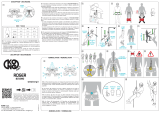 Kong Roger Manuel utilisateur
Kong Roger Manuel utilisateur
-
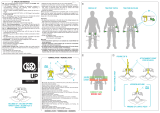 Kong Up Manuel utilisateur
Kong Up Manuel utilisateur
-
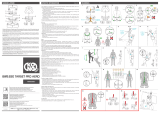 Kong Kit Target Pro Aero Manuel utilisateur
Kong Kit Target Pro Aero Manuel utilisateur
-
 Kong Indiana Canyon Manuel utilisateur
Kong Indiana Canyon Manuel utilisateur
-
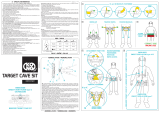 Kong Target Cave Manuel utilisateur
Kong Target Cave Manuel utilisateur
-
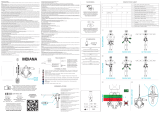 Kong Indiana Manuel utilisateur
Kong Indiana Manuel utilisateur
-
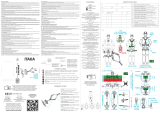 Kong Itaka Manuel utilisateur
Kong Itaka Manuel utilisateur
-
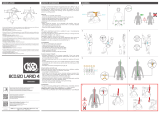 Kong LARIO 4 Manuel utilisateur
Kong LARIO 4 Manuel utilisateur
-
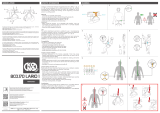 Kong LARIO 1 Manuel utilisateur
Kong LARIO 1 Manuel utilisateur
-
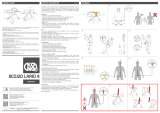 Kong LARIO 4 Manuel utilisateur
Kong LARIO 4 Manuel utilisateur
Autres documents
-
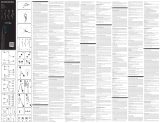 EDELRID Switch Adjust Sling Mode d'emploi
EDELRID Switch Adjust Sling Mode d'emploi
-
SKYLOTEC DUNIT mini Instructions For Use Manual
-
Petzl CHEST'AIR Technical Notice
-
Climbing Technology 7W09008008CU Mode d'emploi
-
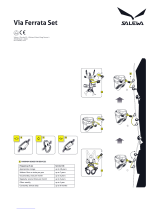 Salewa VIA FERRATA SET Instructions Manual
Salewa VIA FERRATA SET Instructions Manual
-
Petzl CALIDRIS Technical Notice
-
Petzl NEWTON FAST International Version Une information important
-
Petzl ASTRO BOD FAST International Version Une information important
-
Husqvarna HUSO2022 Arborist Climbing Harness Manuel utilisateur
-
Petzl NEWTON FAST International Version Une information important













